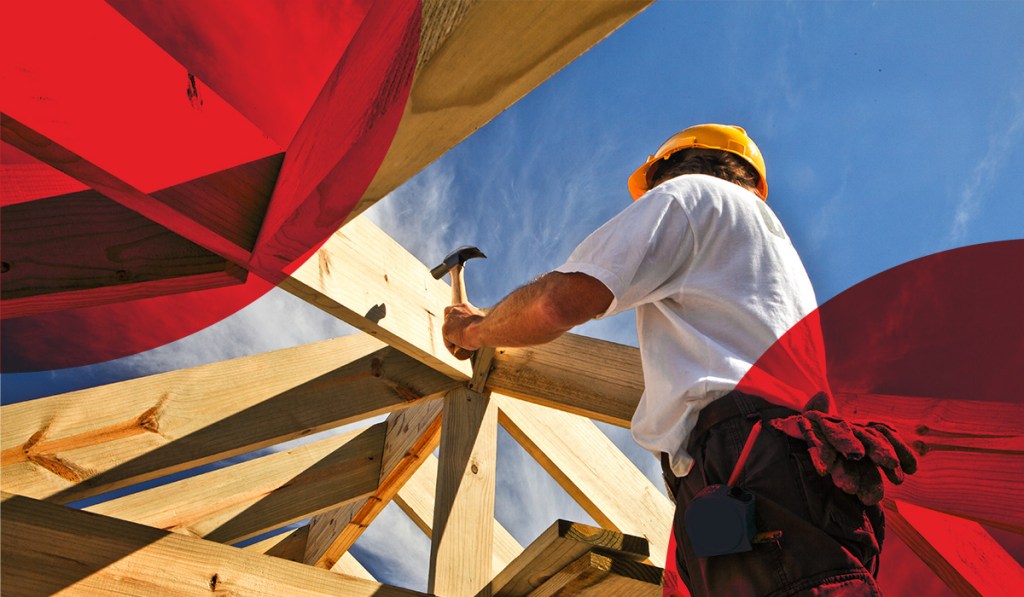When market players say housing leads us into a recession, it traditionally means the
Federal Reserve raised rates too much, housing slowed down as a result and a job-loss recession isn’t too far off. But a funny thing happened this year for the U.S. economy: single-family permits kept rising as new home sales were showing year-over-year growth. How did this happen when mortgage rates rose from the lows earlier in the year?
It happened because big homebuilders made deals, cut prices, and paid down rates, all to grow market share. The more prominent homebuilders are flexing their financial muscle over smaller builders and peeling off buyers to help sell homes. This has kept construction workers employed and they have the money to spend on goods and services.
One of the early indicators of a job-loss recession has failed to materialize, as construction employment has held up so far. Since we have a lot of new homes where construction hasn’t even been started yet — the most ever at 105,000 new homes — construction workers are still needed to finish those homes.
Today’s housing starts data beat expectations, but the storyline has been the same all year: the apartment boom is fading while single-family starts have done better than anyone could imagine, especially with mortgage rates increasing to 8%. In the chart below, you can see that 5-unit permits are heading lower, the opposite of the chart above with single-family permits.
From Census:
Housing Starts: Privately‐owned housing starts in October were at a seasonally adjusted annual rate of 1,372,000. This is 1.9 percent (±13.5 percent)* above the revised September estimate of 1,346,000, but is 4.2 percent (±10.0 percent)* below the October 2022 rate of 1,432,000.
Considering all the factors that the housing market has had to deal with, housing starts, as we can see in the chart below, have held, and we still have a lot of single-family homes in the works that need to be finished. If mortgage rates head lower, that will be a positive for the builders as more prominent builders have shown the capacity to pay down rates to move products.
The homebuilder’s confidence has faded recently, but a big reason is that smaller builders can’t pay down rates as much as bigger builders, so this grab for market share is keeping new home sales growing in a higher rate environment.
Housing Completions:Privately‐owned housing completions in October were at a seasonally adjusted annual rate of 1,410,000. This is 4.6 percent (±11.6 percent)* below the revised September estimate of 1,478,000, but is 4.6 percent (±13.2 percent)* above the October 2022 rate of 1,348,000.
Housing completions is still one of the saddest charts we have had post-COVID-19: housing completions haven’t gone anywhere for years, and I don’t see this changing anytime soon to the positive side; the builders are working off their backlog and slow and steady wins their race.
Building permits: Privately‐owned housing units authorized by building permits in October were at a seasonally adjusted annual rate of 1,487,000. This is 1.1 percent above the revised September rate of 1,471,000, but is 4.4 percent below the October 2022 rate of 1,555,000.
The one bright spot for the builders is that housing permits have held the line here as the 5-unit boom comes crashing down, and single-family permits have picked up. That, and the backlog of new homes that are under construction or not yet started, has kept Americans employed and working. As we can in the chart below, permits have stabilized and are slowly moving upward.
The market share wars between large builders and everyone else have helped the economy with new single-family construction and permits. Not all builders have excess profit margins to spare to buy down rates. More construction can continue if total mortgage rates are headed lower. However, considering mortgage rates got to 8% — which is very restrictive for construction growth — the builders have found a way to keep things going; they simply throw more money at it.






